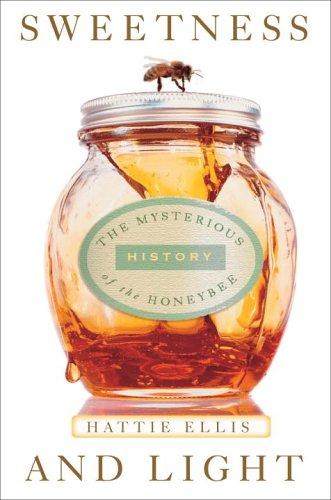

Most ebook files are in PDF format, so you can easily read them using various software such as Foxit Reader or directly on the Google Chrome browser.
Some ebook files are released by publishers in other formats such as .awz, .mobi, .epub, .fb2, etc. You may need to install specific software to read these formats on mobile/PC, such as Calibre.
Please read the tutorial at this link: https://ebookbell.com/faq
We offer FREE conversion to the popular formats you request; however, this may take some time. Therefore, right after payment, please email us, and we will try to provide the service as quickly as possible.
For some exceptional file formats or broken links (if any), please refrain from opening any disputes. Instead, email us first, and we will try to assist within a maximum of 6 hours.
EbookBell Team

4.7
16 reviewsFor anyone who's wondered about how humans first started eating honey—after all, bees guard it jealously—Ellis's charming history will be a treat. Apis mellifera is "the most studied creature on the planet after man," she writes, although even so, it turns out that the honeybee's biological ancestry isn't quite clear. There is some evidence that their relatives existed 200 million years ago or more—earlier than the earliest known flower, in other words, which would mean that they were eating something other than nectar. British food writer Ellis (_Tea_) leaves the tedious details of bee taxonomy to the experts, but satisfies readers with the fact that bees probably evolved from an ancestor of the carnivorous wasp. She then reveals the state of modern beekeeping by visiting apiarists and letting them talk about their bees, which they do, quite happily, relating tales of the delightful symbiosis of human and bee. Ultimately, it's all about the honey, and those who prefer to think of the sweet stuff as something that comes from jars might cringe at Elllis's description of how bees make it: the phrase "sucked and pumped, sucked and pumped, sucked and pumped" is queasily accurate. Entrancing anecdotes, accurate details and meticulous research add up to a sweetly satisfying read. 20 b&w photos.
Copyright © Reed Business Information, a division of Reed Elsevier Inc. All rights reserved.
As Ellis points out, wherever bees are, whether jungle, tundra, or forest, they find nectar to turn into honey, honey that tastes of mint, or grapes, or oranges, depending on the flowers the bees have visited. Ellis, a columnist and food writer, has created a marvelous combination of natural history and social science as she explores the ways of bees, honey, and humans. The history of bees and flowers are inexorably intertwined--flowers need bees for pollination; bees need flowers for nectar. And as shown in Paleolithic art, humans have stolen honey from bees for millennia, and as early as the ancient Egyptians began to create homes for bees to encourage them to live nearby. Ellis follows the course of beekeeping, even visiting modern beekeepers on Manhattan rooftops. Nancy Bent
Copyright © American Library Association. All rights reserved